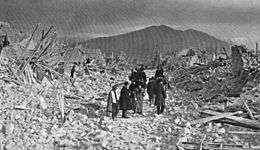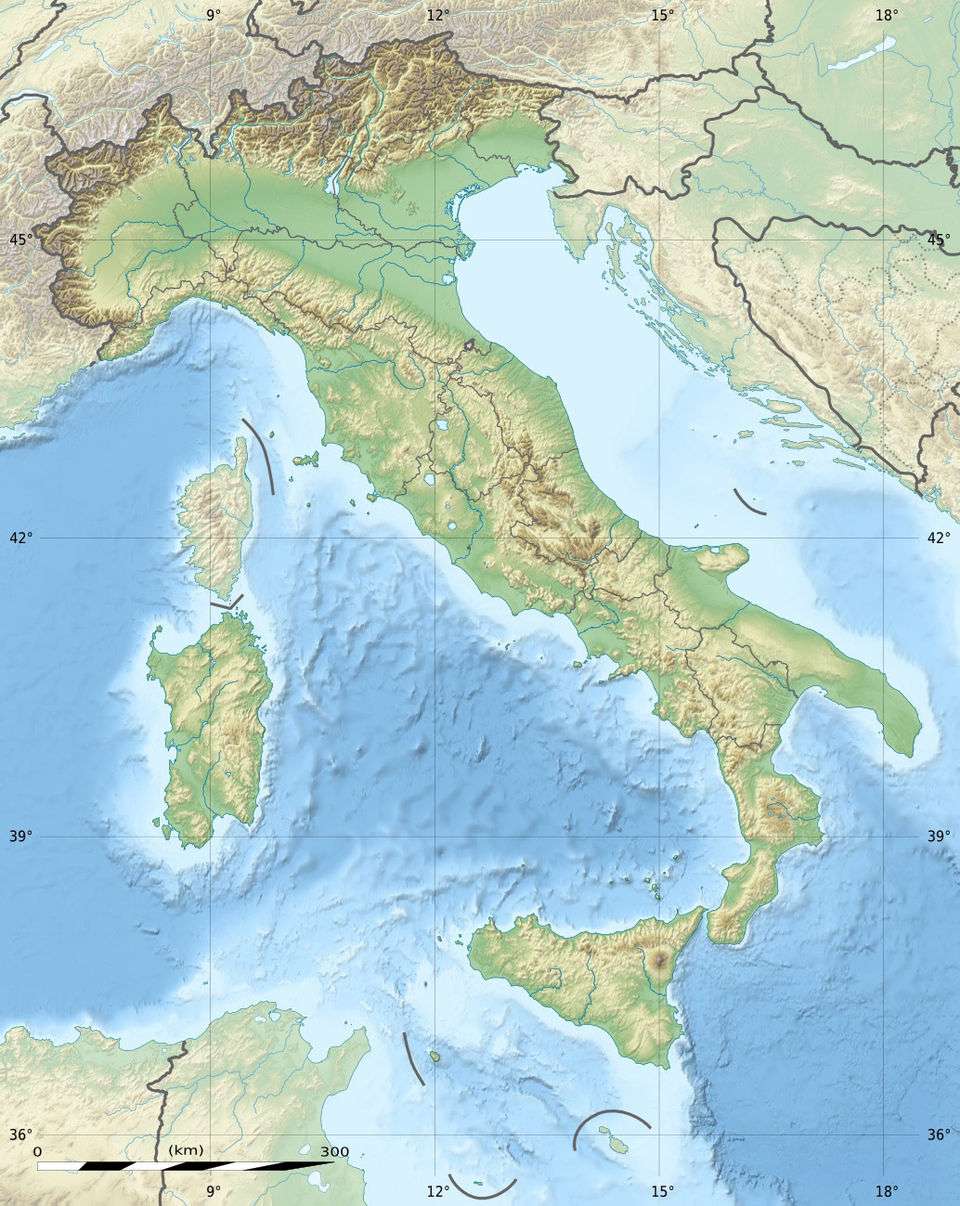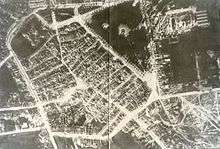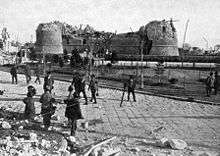1915 Avezzano earthquake
 Ruins of Via Napoli in Avezzano | |
 | |
| Date | 13 January 1915 |
|---|---|
| Origin time | 06:52:42 UTC [1] |
| Magnitude | 6.7 Mw [1] |
| Depth | 15 km (9.3 mi) [1] |
| Epicenter | 42°11′N 13°35′E / 42.18°N 13.59°ECoordinates: 42°11′N 13°35′E / 42.18°N 13.59°E [1] |
| Areas affected | L'Aquila, Italy |
| Total damage | $60 million [2] |
| Max. intensity | XI (Extreme) [2] |
| Casualties | 29,978–32,610 dead [2] |
The 1915 Avezzano earthquake occurred on January 13 in central Italy at 07:52:42 local time. The shock had a moment magnitude of 6.7 and a maximum Mercalli intensity of XI (Extreme). The epicenter was located in the town of Avezzano (which was destroyed) in the Province of L'Aquila. Around 30,000 direct fatalities and $60 million in damage resulted from the earthquake.
History
Central and southern Italy in particular have been earthquake zones for over 300 years, with the deadliest earthquake dating back to at least the 1693 Sicily earthquake. Powerful shocks in 1693, 1783, and 1908 as well as 1915 have killed over 30,000 people each.[3]
Damage and casualties


The earthquake took place at around 8:00 local time affecting thousands of people throughout central and southern Italy; the shaking was even felt in Rome.[4] The town of Avezzano was literally toppled from the shaking and only one high-rise building survived.[4] Ninety-six percent of its population was eliminated almost simultaneously, the worst casualty zone. Several other settlements were demolished in the worst of the earthquake. This damage was attributed to the length of the shock, over 1 minute, and the enormous amount of energy released during the tremor. Compound motion of the fault was also a likely contributor to the earthquake's destruction. The structure of the housing also contributed to the collapse; many homes had been built from simple rocks of varying size and were not reinforced by mortar or even wood.[4]
Damage of the earthquake was distributed throughout central and southern Italy. St John's Lateran reported one fallen statue in addition to cracks in the Column of Marcus Aurelius; Rome experienced other minor damages. In fact, damage from the earthquake was diverse; either the location was destroyed or experienced little to no damage.[4]
Survivors were pulled out slowly from the ruins of earthquake-stricken zones. One man survived in a barn for a period of 25 days living solely off of grains and water. After a short time the searchers ran out of space to dispose of the debris as it was too overwhelming in mass, forcing the workers to give up. As E.V. Robinson later described, the remaining "work of excavation seemed to go on in an unsystematic and half hearted way".[4]
Response and relief efforts
Initial reports did not mention serious damage, and not until later that night did the scale of the devastation become clear. The government in Rome assumed local authorities had delayed reporting the facts, and it was rumored that they even tried to remove one mayor from office. However, when trying to serve him notice it became clear that he, together with most of his town's people, had died in the earthquake. Because of World War I the government decided not to accept foreign assistance, and a national rescue and relief effort was promptly started.[4]
See also
References
- 1 2 3 4 ISC (2016), ISC-GEM Global Instrumental Earthquake Catalogue (1900–2009), Version 3.0, International Seismological Centre
- 1 2 3 USGS (September 4, 2009), PAGER-CAT Earthquake Catalog, Version 2008_06.1, United States Geological Survey
- ↑ "Italy's earthquake history". BBC News. 31 October 2002. Retrieved 25 April 2009.
- 1 2 3 4 5 6 Robinson, E.V. (May 1915). "A Visit to the Avezzano Earthquake Zone". Journal of Geography. Routledge. 13 (9): 265, 266. doi:10.1080/00221341508983666.